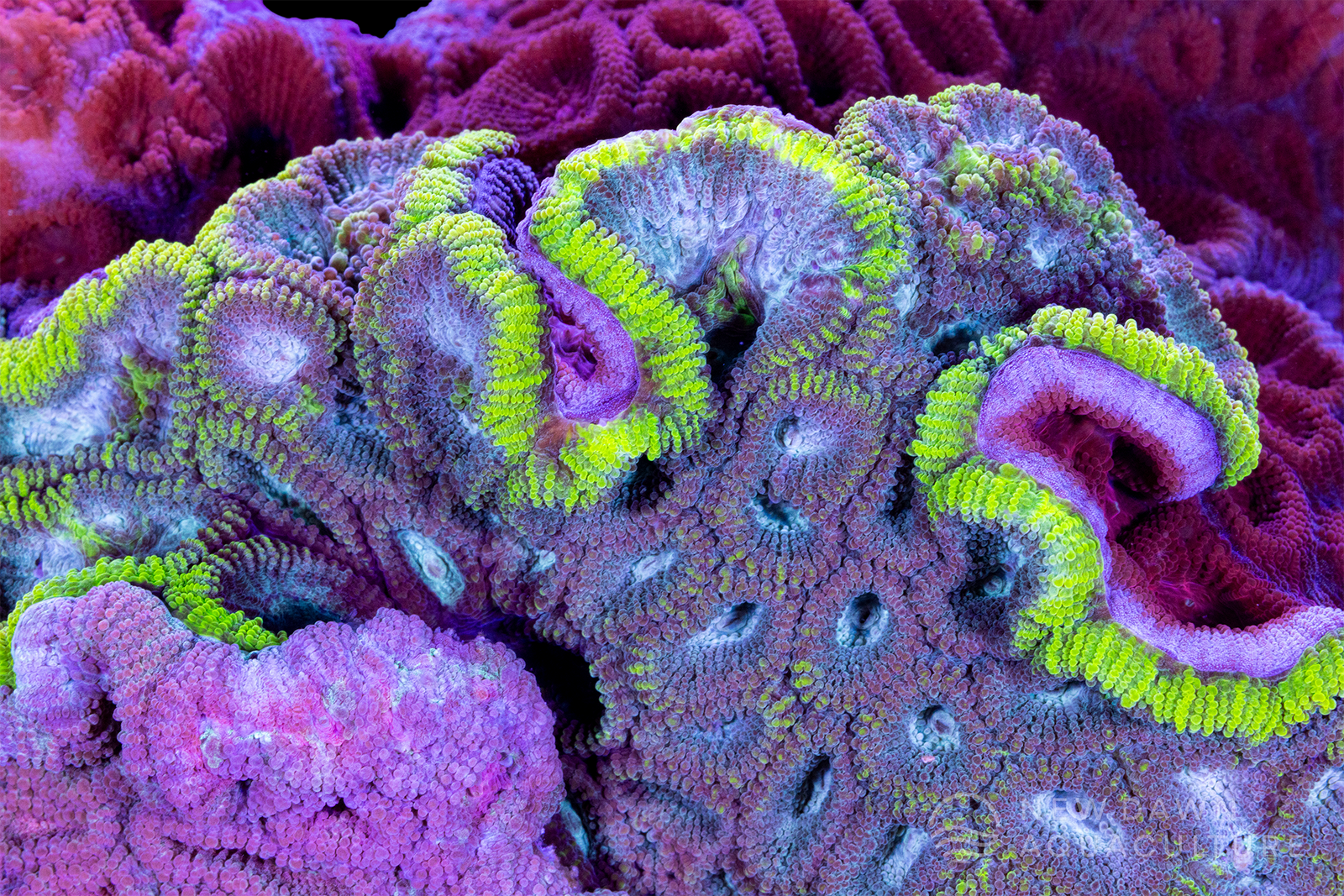In reef tanks, phosphate is fuel, not foe.
What does it do?
Phosphorize supplements the tank with phosphates. Phosphates are an important part of reef keeping, not just for your corals but for the symbiotic algae (zooxanthellae) that provide them with most of their nutrients[2,3].
How is it helpful?
Tanks are delicate ecosystems that require a multitude of different elements both major and minor, to thrive. The most important/commonly mentioned are nitrates, phosphates and alkalinity. All of these are vital to coral health but phosphates play a crucial role in providing the coral with things such as amino acids, sugars, lipids, and fats[2,3,5].
Why is phosphate so important?
Phosphates are responsible for creating the energy required for photosynthesis to make the nutrients (sugars, fats, lipids, and proteins) that are “fed” to the coral[1,2,7]. This is important as most corals in the hobby are photosynthetic or heavily rely on photosynthesis and its by-products from the zooxanthellae to survive[5,7]. Additionally, while there has been many disagreements in the literature as to how exactly photosynthesis aids in calcification of the coral skeleton, it has been shown to be an integral part of creating the skeleton[4,6].
How is this possible, and what does it have to do with phosphate?
Phosphate is the “P” in ATP, the energy currency inside cells. During photosynthesis, zooxanthellae use light to make ATP, and that energy drives the production of sugars, amino acids, and fats that corals use for growth and daily maintenance [1,2,4,7]. Corals also use ATP to move ions like calcium in and out of cells, a step required for building skeleton together with carbonate [4]. When phosphate is too low, ATP production is limited and the whole photosynthesis‑and‑calcification engine can stall.
Practical targets
- Phosphate (PO₄): Aim for0.03–0.10 ppmand avoid0.00.
- Nitrate (NO₃): Many successful tanks run ~2–20 ppm alongside non‑zero PO₄.
- Raise gradually: Increase PO₄ by about 0.02–0.03 ppm per day toward your target, testing between doses.
- Stability first: Make one change at a time and re‑test before redosing.
Why would I need this product?
If phosphates are low (typically below 0.03ppm) there is a risk that the corals are not getting enough to satisfy the energy needed for their regular day to day functions or for growth. On top of that, if there is an imbalance with Nitrate, you are at risk for an algae outbreak. Typically you may hear about the Redfield Ratio when comparing nitrates and phosphates. In the ocean it is ~16:1 N:P by atoms (≈ 10:1 NO₃:PO₄ in hobby ppm). In aquaria you do not need to match that exactly, stability and non‑zero phosphate are more important. A practical target is to keep phosphate detectable (around 0.03–0.10 ppm) alongside reasonable nitrate.
Keeping your water chemistry balanced and monitored is the best way to keep your tank healthy and thriving!
Sources:
- Buckingham, M. C., et al. "Impact of nitrogen (N) and phosphorus (P) enrichment and skewed N: P stoichiometry on the skeletal formation and microstructure of symbiotic reef corals." Coral Reefs 41.4 (2022): 1147-1159.
- Cui, Guoxin, et al. "Nutritional control regulates symbiont proliferation and life history in coral-dinoflagellate symbiosis." BMC biology 20.1 (2022): 103.
- Nakajima, Ryota, et al. "High inorganic phosphate concentration in coral mucus and its utilization by heterotrophic bacteria in a Malaysian coral reef." Marine Ecology 36.3 (2015): 835-841.
- Galli, Giovanni, and Cosimo Solidoro. "ATP supply may contribute to light-enhanced calcification in corals more than abiotic mechanisms." Frontiers in Marine Science 5 (2018): 68.
- Martinez-Escobar, Daniel F., and Jennie Mallela. "Assessing the impacts of phosphate mining on coral reef communities and reef development." Science of the total environment 692 (2019): 1257-1266.
- Nakajima, Ryota, et al. "High inorganic phosphate concentration in coral mucus and its utilization by heterotrophic bacteria in a Malaysian coral reef." Marine Ecology 36.3 (2015): 835-841.
- Rawat, Varunendra Singh, et al. "Algae-coral symbiosis: fragility owing to anthropogenic activities and adaptive response to changing climatic trends." Environment, Development and Sustainability (2024): 1-28.


